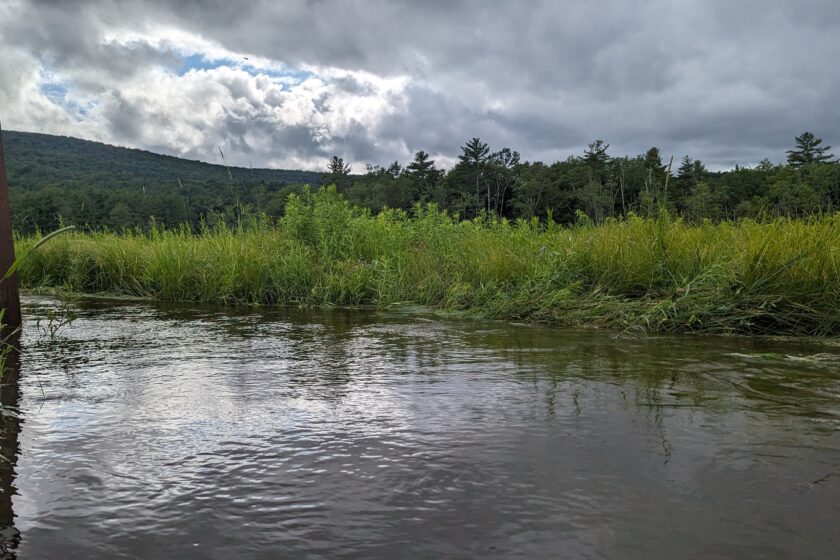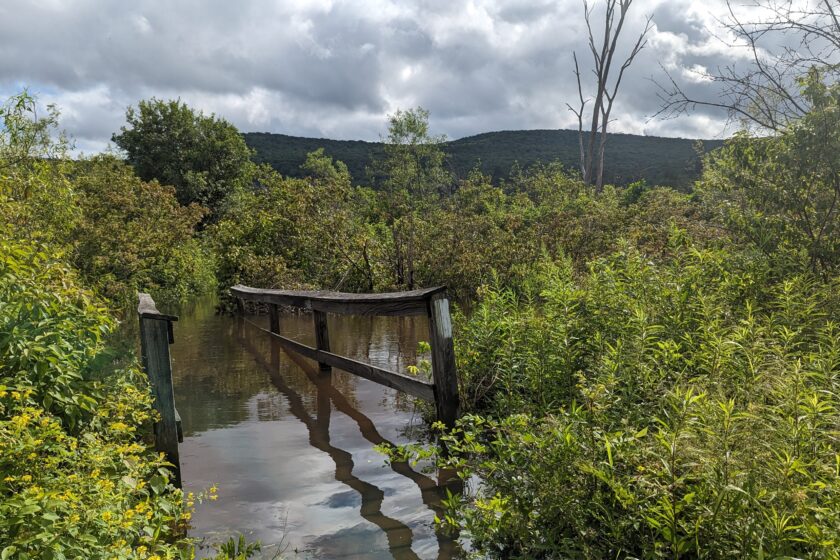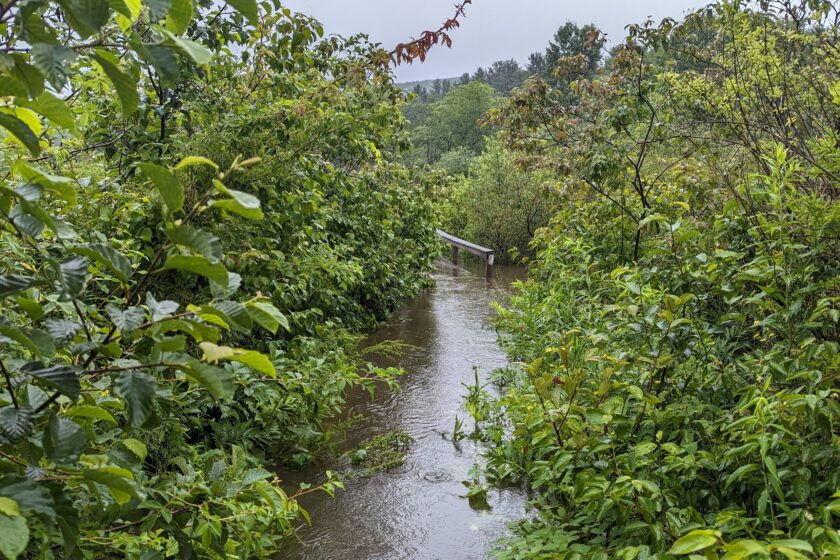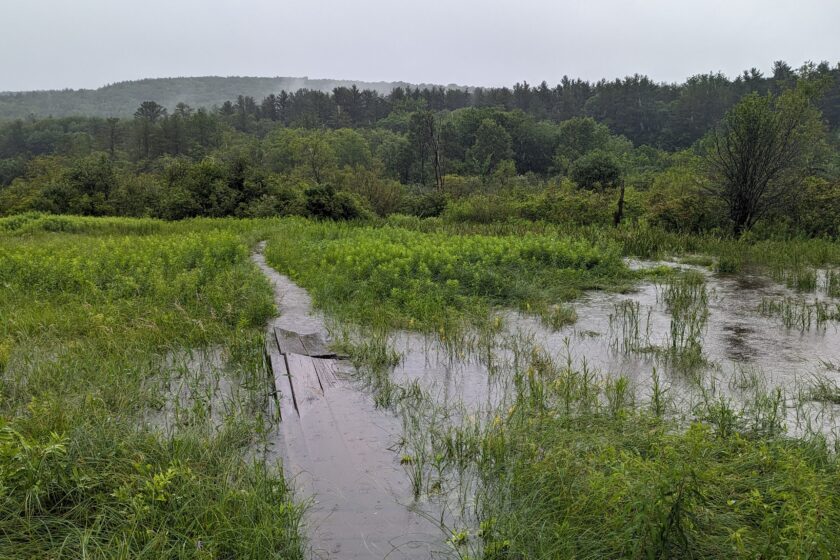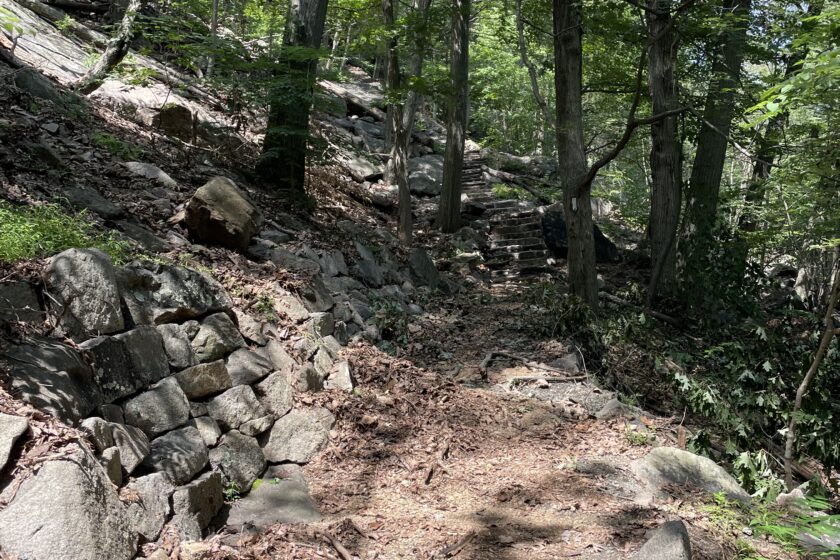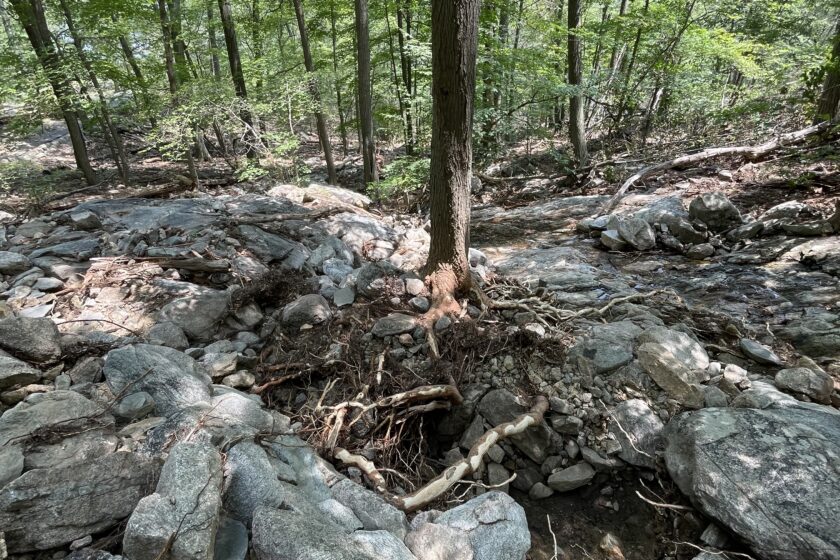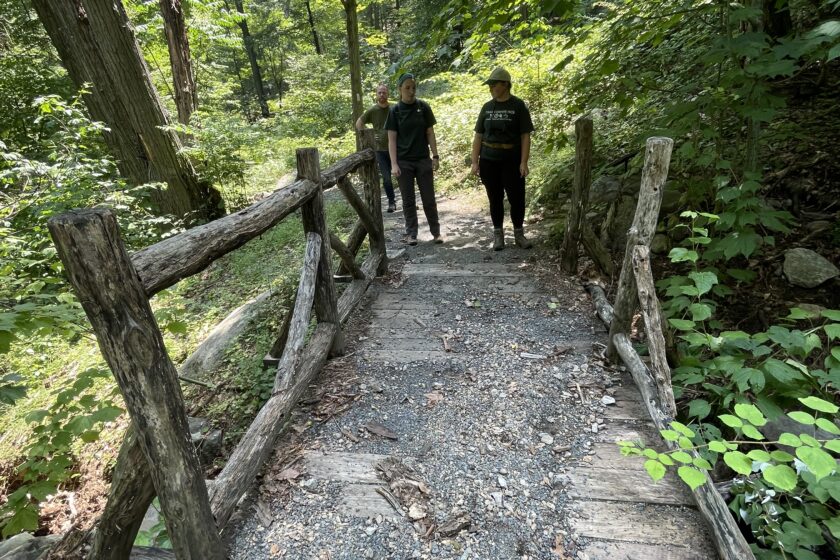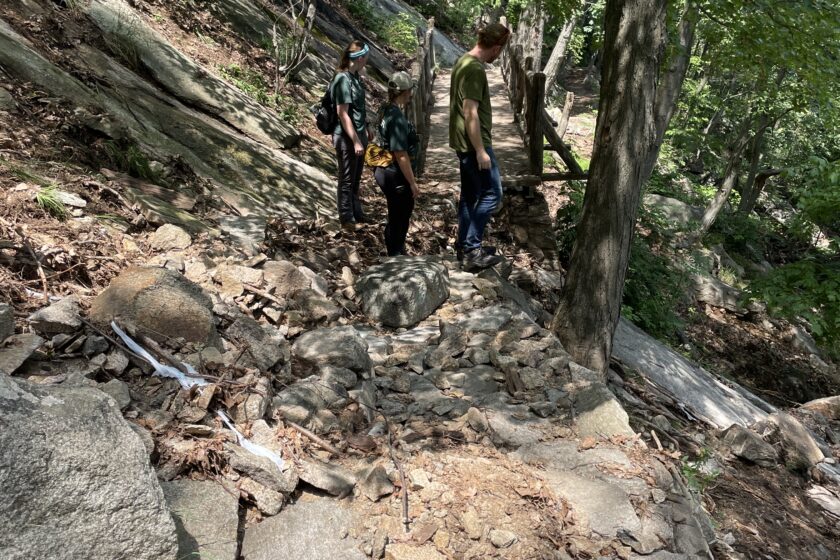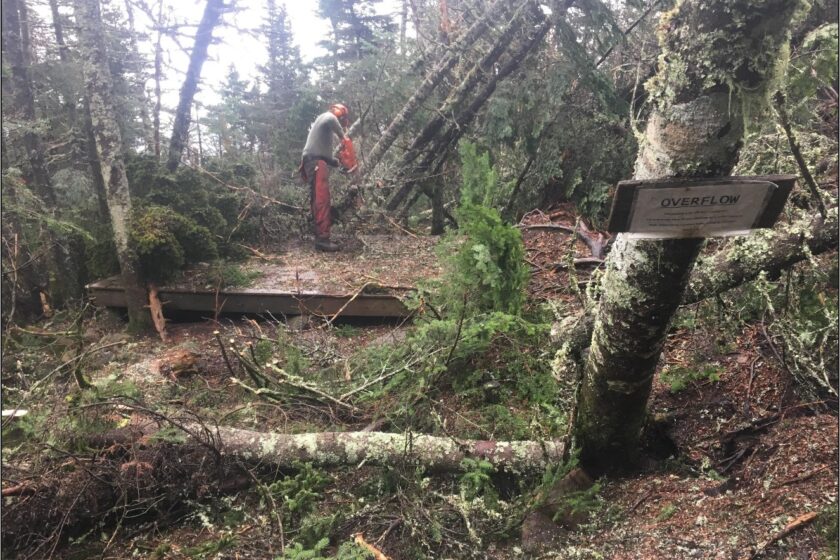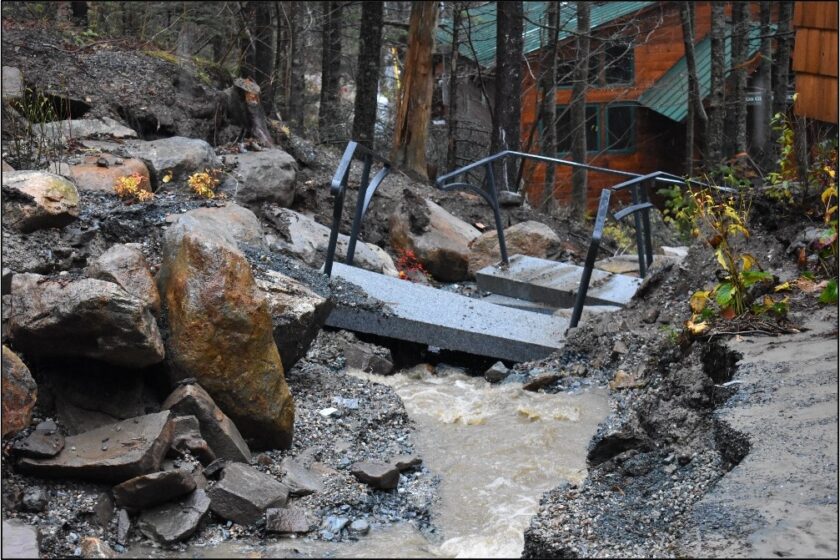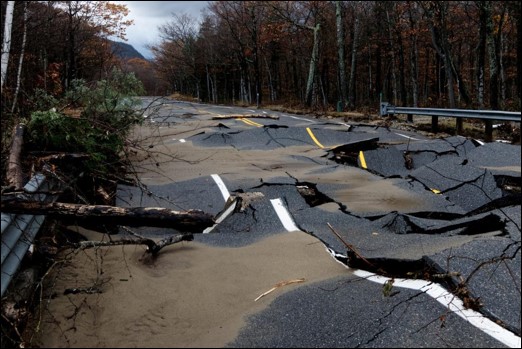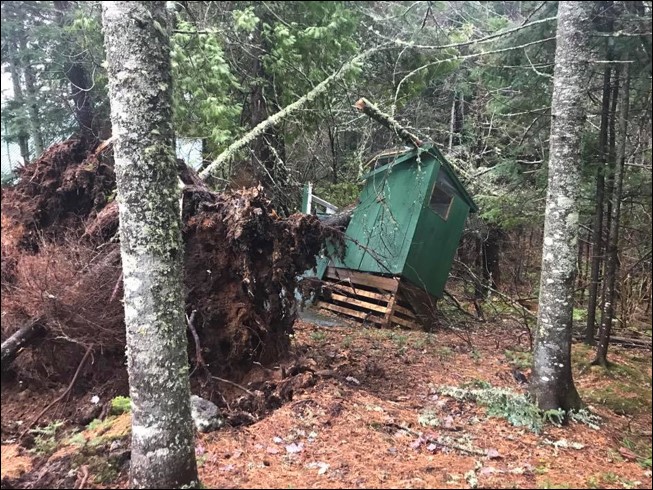by ATC Volunteer Program Staff
Climate Change and A.T. Maintenance
According to the United States Environmental Protection Agency, studies have shown that extreme weather events such as large storms are likely to become more frequent or intense due to climate change. Like many places around the world, the Appalachian Trail (A.T.) has been subject to damage due to the recent storms. Trails like the A.T. suffer from the impacts of intense extremes of droughts, hurricanes, tornadoes, and microbursts, which means that efforts to build and maintain trails that are resilient to these more frequent extremes is becoming increasingly important.
New Hampshire Public Radio recently visited the White Mountains to see how this is being addressed.
One of the Appalachian Trail land management partners, the U.S. Forest Service, has launched a new tool to assess climate risks and vulnerabilities, to support more localized planning for climate adaptation. Trends revealed by the U.S. Forest Service Story Map, as well as the recent memories of storms in the Northeast in 2017 and 2023, indicate Appalachian Trail management partners should be planning ahead for more sustainable trail solutions and supporting the increased need for funding and volunteers to respond to windblown trees, washed-out bridges, severely eroded treadway, and other structures.
Damage in the Northeast in 2023
In July of this year, volunteers reported that temporary flooding, which has occurred twice in the past four years, is causing infrastructure like the bridge below to need more repairs and degrade at a faster rate. The expected cost for replacing this bridge and boardwalk system totals approximately $500,000, not to mention the number of hours volunteers and other local partners will need to contribute towards completing such a project. The Trail remains temporarily closed around this section.

A.T. partners at the Green Mountain Club shared with us the following image of a bridge on the Appalachian Trail that was damaged by the storms and excessive rainfall that recently took place in Vermont.

The Appalachian Trail between the Bear Mountain Inn and the Perkins Memorial Tower in New York also recently suffered damage from extreme weather events. The images below show sections of the Trail completely washed away and structures such as stone steps that were meticulously constructed in need of serious repairs. Due to this recent damage, Bear Mountain State Park remains closed to the public (as of publication date 8/9/2023) and A.T. thru-hikers are advised to the provided detour: A.T. Detour through Bear Mt State Park | New York-New Jersey Trail Conference (nynjtc.org)
Extreme weather in 2023 reminiscent of 2017 storms
Many of the same northeast sections of the Appalachian Trail were damaged by a tornado, high winds, and heavy rain in 2017. The resulting impacts to the Trail included windblown trees on camp areas and a privy, buckled roadways leading to trailheads, and a flooded Dartmouth Outing Club (DOC) lodge.
The Path Ahead
Responding to the increased frequency of extreme weather conditions requires preparation and adaptability.
The Department of Transportation recently released report on planning for and funding resilient trails. The guide offers recommendations for natural surface trails like the A.T. as well as urban trails. These recommendations come in light of today’s pressures on trails to connect communities, support ecosystem services, offer health benefits to people, and provide transportation options when other transportation facilities are shut down or inaccessible, as was the case in July in Vermont.
This year, visitors and volunteers alike navigated poor air quality due to wildfires in Canada and prevailing winds that blanketed the Appalachians with air dense with particulates. Drier conditions may pose threats to forests far away that impact the A.T. as they have this year, but the conditions also exist for more frequent wildfires closer to the Appalachian Trail, too. Visitors will need to be more cautious with fire into the future, and volunteers may have to address repairs related to fire in the future as well.
As in the past, work is underway this year by volunteers to repair storm damage to the Appalachian Trail. Volunteers’ persistence in restoring the treadway after erosion, keeping the trail clear of windblown trees, and repairing bridges and boardwalks ensures that the Appalachian Trail continues to be a world-class hiking experience. There are concrete actions below that anyone can take to help ensure the A.T. can withstand the threats of a changing climate:
Look for volunteer opportunities to support the Appalachian Trail
Read ATC’s Conservation and Trail Management Policy on Climate Change
Donate to support the Appalachian Trail Conservancy’s work.
Discover More
Building an Enduring Appalachian Climate Corridor
Connect and Protect
In 2021 and 2022, the Appalachian Trail Conservancy, the Center for Large Landscape Conservation, members of the Appalachian Trail Landscape Partnership, and dozens of other climate and conservation experts convened to explore ways to enhance the climate resiliency of the A.T. landscape.
Special Online Program
Climate Change and the A.T. Landscape
On March 25, 2021, the Appalachian Trail Conservancy hosted a conversation on one of the most pressing issues facing the Appalachian Trail and the world at large: climate change.

Official Blog
Preserving the “Oxygen” of the Trail
How Benton MacKaye’s call for protecting the “oxygen in the mountain air along the Appalachian skyline” guides our work in combating climate change on the A.T.


